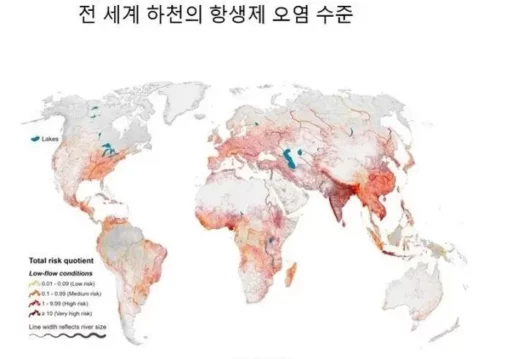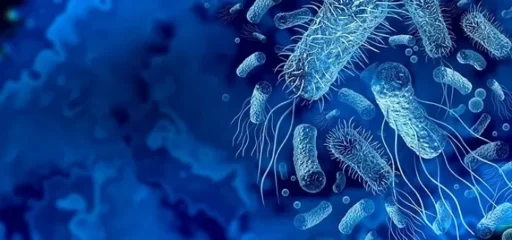Antibiotics Entering Global Rivers Amount to 8,500 Tons Annually
A shocking research finding reveals that approximately 8,500 tons of antibiotics flow into rivers worldwide each year. This figure accounts for 30% of the 29,200 tons of 40 major antibiotics consumed globally.

An international collaborative research team led by McGill University in Australia analyzed data collected from over 900 rivers (with a total length of 23.8 million km) to derive this result.
In a paper published in the "Proceedings of the National Academy of Sciences (PNAS) Nexus," the researchers warned that amoxicillin, the most frequently prescribed antibiotic in the world, has already reached a dangerous level. Current wastewater systems do not filter antibiotic substances effectively, allowing antibiotics discarded from hospitals and homes to continuously flow into rivers. Furthermore, 30-90% of the antibiotics consumed by humans are excreted back into the environment, exacerbating water pollution.
Amoxicillin, the most frequently prescribed antibiotic globally, is estimated to have already reached dangerous levels.
Severe Antibiotic Pollution and Risks in Asia
The research team particularly pointed out that the increase in antibiotic use combined with inadequate wastewater treatment in Southeast Asia has made the problem even more serious. It was found that 47% of the rivers with the highest concentrations of antibiotics are concentrated in India, China, and Pakistan.

It is estimated that approximately 750 million people live near rivers contaminated with antibiotics worldwide. This means that 10% of the global population is exposed to the highest cumulative concentrations of antibiotics found in the top 1% of surface waters.
Dr. Helloisa Ehalt Masedo, the postdoctoral researcher leading the study, warned, "Although the residual amounts of individual antibiotics are very low and difficult to detect, chronic exposure, even at low concentrations, can pose risks to human health and aquatic ecosystems."
Spread of Antibiotic-Resistant Bacteria and Future Risks
According to the medical journal Lancet, the number of deaths caused by antibiotic-resistant bacteria worldwide reaches approximately 700,000 each year.

What is even more concerning is that the United Nations has warned that by 2050, as many as 10 million people could be at risk of dying due to antibiotic-resistant bacteria.
It is noteworthy that the estimated figures in this study do not include antibiotics that leak from livestock farms or pharmaceutical factories.
Jim Nissel, a co-author of the paper, explained, "Nonetheless, the fact that these figures emerged signifies that the antibiotic pollution of rivers is serious due only to antibiotics used in humans."
The research team emphasized that establishing monitoring programs is crucial for preventing river pollution caused by antibiotics, and improvements in wastewater treatment facilities must follow.
Image Source: India’s Ganges River / pixabay, PNAS Nexus, reference photos for understanding the article / gettyimagesbank


